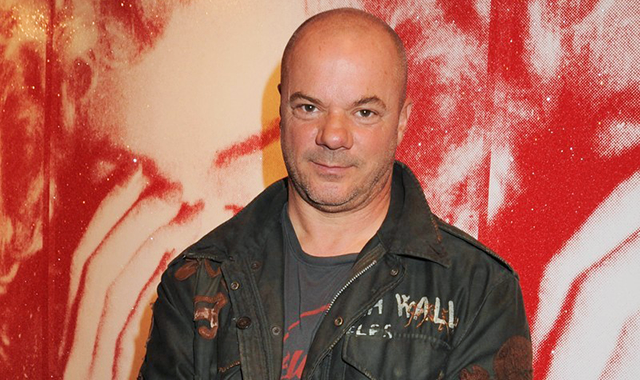Over the last two years, the art world has been engrossed with photographer Patrick Cariou's copyright infringement case against appropriation art superstar Richard Prince, hearalded as promising a defining legal judgement on copyright and fair use in visual art. This week, according to the Hollywood Reporter, U.S. District Court judge Dolly Gee has issued a ruling on another appropriation art case, Morris v. Young, which is eerily similar to the hotly debated Prince v. Cariou. The new decision dealt with many of the same appropriation-art issues, only this time saw the judge distinguish between individual works that were unique enough to count as art, and others that were deemed merely theft -- all by the same artist.

Russell Young / Photo by Dave M. Benett/Getty Images
Both cases involve copyrighted photographs which artists later appropriated without permission, changed in some way, and presented as their own work without compensating the original photographer. In the California case, the issue revolves around photographer Dennis Morris's images of the Sex Pistols. British artist Russell Young used Morris's photos to create a variety of appropriation artworks, in some cases just changing the hue of the original black-and-white image, and in others overlaying his own graphics onto the image. (Young's website proudly says that his celebrity-referencing art is collected by the likes of Kate Moss and Brad Pitt, as well as the Qatari Royal Family and President Barack Obama.)
As in the Prince case, whether or not Young's works legally count as copyright infringement depends on whether or not they can be proven to be "fair use." For art, this generally means proving to the court that the work was sufficiently transformative to give it a new meaning. This particular issue proved difficult for Prince, who was unable to articulate his works' new meaning in front of the court.
The art world's beef with this part of the law has always been that it essentially turns judges into art critics, giving them the power to determine whether a particular appropriation work has enough artistic merit to stand on its own. And indeed, in the Young case, the judge decided that only one work done by the artist qualified as unique under the fair use exception, while the two other works did not. In a formal analysis that lays out her reasoning as to what makes a work of art successful, Judge Gee wrote (as quoted in the Hollywood Reporter):
The piece incorporates three distinct elements: a Union Pacific logo, the words 'White Riot' in graffiti with red stars, and two images of the Subject Photograph positioned side-by-side. The images of the Subject Photograph are distorted by the graffiti words imposed over them, and the Union Pacific Logo looms above them, seemingly connected to the other elements although how so is not clear. Thus, unlike the other two Accused Works, 'White Riot + Sex Pistols' incorporates images beyond the band itself and arranges them such that the composition may convey a new message, meaning, or purpose beyond that of the Subject Photograph.
Since the two of the three works in question were found to be derivative, the judge ultimately handed Morris the win -- leaving today's generation of appropriation artists to wonder, perhaps, just how many logos they will need to impose over their work for it to qualify as fair use.
-Author, Shane Ferro BLOUIN ARTINFO
More of Today's News from BLOUIN ARTINFO:
Like what you see? Sign up for BLOUIN ARTINFO's daily newsletter to get the latest on the market, emerging artists, auctions, galleries, museums, and more.